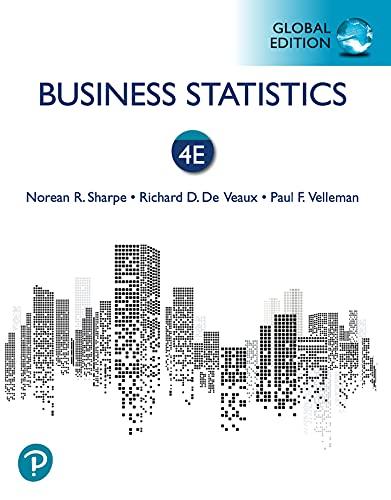Two coins. In a drawer are two coins. They look the same, but one coin produces heads
Question:
Two coins. In a drawer are two coins. They look the same, but one coin produces heads 90% of the time when spun while the other one produces heads only 30% of the time. You select one of the coins. You are allowed to spin it once and then must decide whether the coin is the 90%- or the 30%-head coin. Your null hypothesis is that your coin produces 90% heads.
a) What is the alternative hypothesis?
b) Given that the outcome of your spin is tails, what would you decide? What if it were heads?
c) How large is a in this case?
d) How large is the power of this test? (Hint: How many possibilities are in the alternative hypothesis?)
e) How could you lower the probability of a Type I error and increase the power of the test at the same time?
Step by Step Answer:

Business Statistics
ISBN: 9781292269313
4th Global Edition
Authors: Norean Sharpe, Richard De Veaux, Paul Velleman






